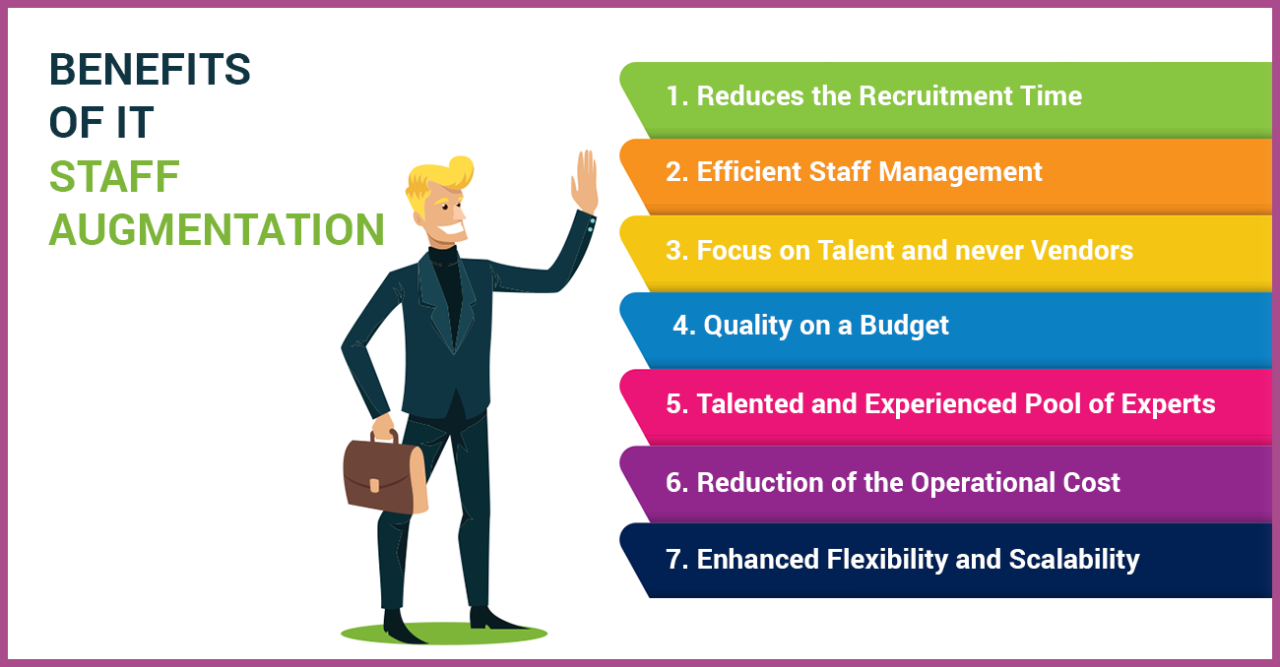Staff Augmentation
What is Staff Augmentation?
Definition:
Staff augmentation automation refers to the integration of technology and automated processes into the staff augmentation model, enhancing the efficiency, scalability, and overall effectiveness of augmenting a workforce with external talent. This approach leverages digital tools to streamline the onboarding, collaboration, and management of external professionals, ensuring a seamless integration into existing teams and workflows.
Analogy:
Think of staff augmentation automation as the conductor of a well-orchestrated symphony. Similar to how a conductor seamlessly coordinates musicians to create harmonious music, staff augmentation automation orchestrates the integration of external talent into internal teams, ensuring a cohesive and effective collaboration.
Further Description:
Staff augmentation automation encompasses various elements, including:
Skill Matching Algorithms: Utilizing algorithms to match specific project requirements with the skills of external professionals. Ensuring a precise alignment between the skills needed and the expertise offered by external talent.
Digital Onboarding Platforms: Streamlining the onboarding process through digital platforms, ensuring a smooth transition for external professionals into the company’s work environment.
Collaboration Tools Integration: Integrating digital collaboration tools to facilitate seamless communication and collaboration between internal and external team members. Enhancing project visibility, task tracking, and knowledge sharing through centralized platforms.
Performance Monitoring and Analytics: Implementing automated tools to monitor the performance of both internal and external team members. Gathering analytics to assess project progress, identify potential bottlenecks, and ensure optimal productivity.
Why is Staff Augmentation Automation Important?
Efficient Skill Matching: Automation ensures precise skill matching, aligning the expertise of external professionals with the specific needs of each project.
Seamless Onboarding: Digital onboarding platforms streamline the onboarding process, reducing the time and effort required to integrate external talent into existing teams.
Enhanced Collaboration: Integration of collaboration tools fosters effective communication and collaboration, breaking down geographical barriers and ensuring a cohesive working environment.
Data-Driven Decision Making: Automated monitoring and analytics provide valuable data for decision-making, allowing organizations to assess the performance of both internal and external teams and optimize workflows.
Examples and Usage:
Skill Matching Platforms: Online platforms that use algorithms to match project requirements with the skills and expertise of external professionals.
Digital Onboarding Solutions: Platforms that automate the onboarding process, including document submission, training modules, and introductions to company culture.
Collaboration and Project Management Tools: Tools like Slack, Trello, or Asana that facilitate seamless communication, task management, and collaboration between internal and external team members.
Key Takeaways:
Precision in Workforce Integration: Staff augmentation automation ensures the precise alignment of skills needed for a project with the expertise offered by external professionals.
Streamlined Onboarding: Digital onboarding platforms simplify and accelerate the onboarding process, enhancing the integration of external talent into existing teams.
Efficient Collaboration: Integration of collaboration tools promotes effective communication and collaboration, fostering a unified and productive working environment.
Data-Driven Optimization: Automated monitoring and analytics enable data-driven decision-making, allowing organizations to optimize workforce dynamics and project workflows.





